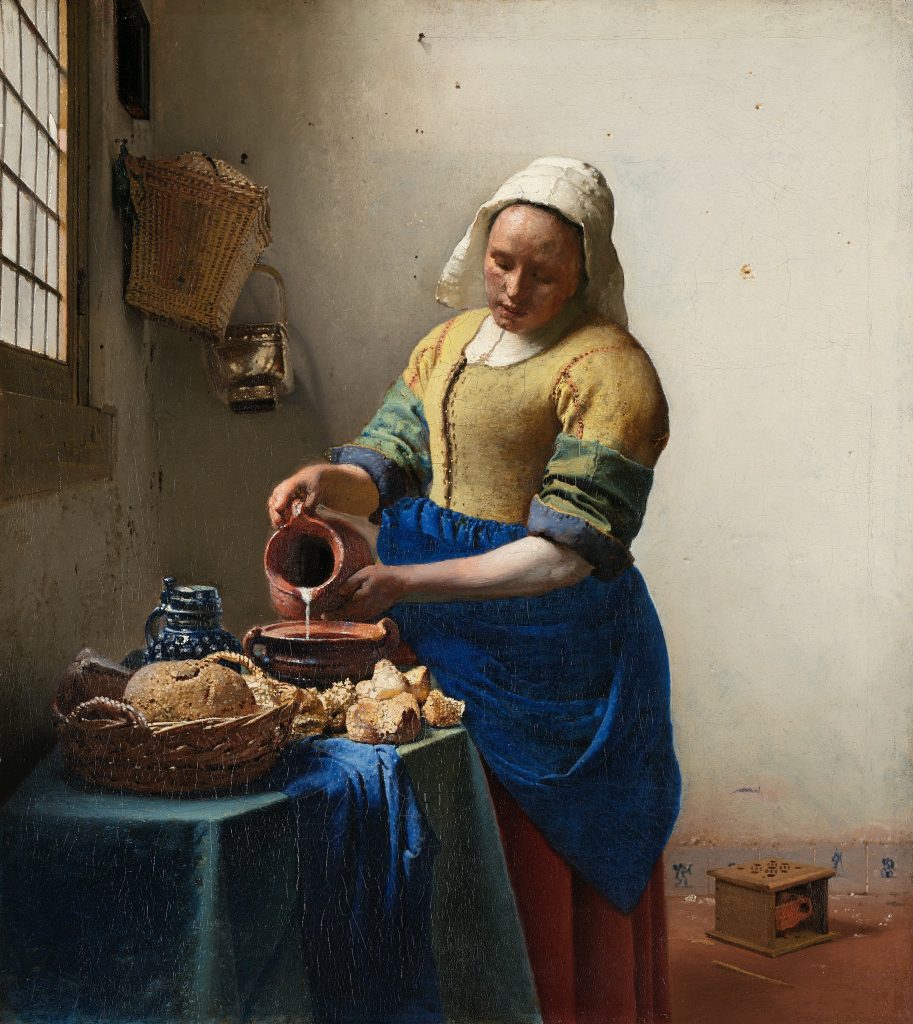Vermeer
Wisława Szymborska
So long as that woman from the Rijksmuseum
in painted quiet and concentration
keeps pouring milk day after day
from the pitcher to the bowl
the World hasn’t earned
the world’s end.
trans. Clare Cavanagh & Stanisław Barańczak
Most of life, as you’ve probably also learned by now, is ordinary. The extraordinary highs (as well as deep lows), are often separated by long stretches of normal life. There is nothing extraordinary in the everyday tasks of getting to work, folding the laundry, or cleaning up after dinner.
Fortunately, art can help us train our senses to see the extraordinary in these ordinary patches of life.
I’ve long appreciated the artwork of Johannes Vermeer, the Dutch painter of the 1600s. Contrary to popular art of his time, he shied away from painting military heroes and dignitaries, instead choosing to depict ordinary people going about their unremarkable day. In the words of Dr. Hannah Roxburgh PhD, Vermeer was “redistributing glamour”, helping us see the glamour of ordinary moments and people. His paintings help us take note of the beauty of ordinary life, and draw contentment in the normal tasks that occupy our time.

The poem above (which landed in my ordinary inbox this week thanks to Matthew Ogle’s daily newsletter, Pome) references Vermeer’s The Milkmaid, and recently gave me pause. Szymborska echoes Thomas Hardy’s sentiment, finding hope not in the extraordinary feats of humanity, but the small enduring acts of ordinary people.

We all encounter these ordinary moments. But if we learn from Vermeer’s perspective, perhaps we can start to see the beauty in the mundane and ordinary of our daily lives.